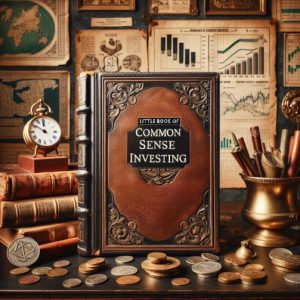
May 7, 2024
Introduction
On October 19, 1987, the Dow Jones Industrial Average plummeted a staggering 22.6%, marking one of the most infamous stock market crashes in history – Black Monday. As investors watched in horror, their portfolios evaporated before their eyes. Amidst the chaos, a peculiar phenomenon unfolded: bonds, traditionally considered a haven, experienced a sharp decline, defying conventional wisdom. This paradoxical event underscores the importance of contrarian investing and understanding the intricate psychology that drives market cycles.
Contrarian investing is the art of going against the prevailing sentiment, questioning the status quo, and embracing unconventional perspectives. It requires a deep understanding of market psychology – the collective emotions and biases influencing investor behaviour. During stock market turmoil, bonds have often been touted as a haven for investors, but their performance is not as straightforward as it may seem. This essay delves into the paradox of bond performance, exploring the interplay between mass psychology, market cycles, and the ever-evolving role of central banks.
The Paradox of Bond Performance: Defying Conventional Wisdom
Conventional wisdom dictates that bonds are a safe investment during stock market crashes. The logic is simple: as investors flee the volatility of stocks, they seek refuge in the perceived safety of fixed-income securities, driving up bond prices and lowering yields. However, this assumption overlooks the complexities of market dynamics and the potential for bonds to underperform or even decline in value during these periods.
One of the most notable examples of this paradox occurred during the 2008 financial crisis. Investors initially flocked to bonds as the stock market plunged, driving up prices and lowering yields. However, as the crisis deepened and the economic impact became more apparent, bond prices tumbled, and yields spiked. The conventional safety net had failed, leaving investors bewildered.
Benjamin Graham, the father of value investing, emphasized the importance of being a contrarian investor and not following the herd mentality. He cautioned against blindly accepting conventional wisdom, stating, “The intelligent investor is a realist who sells to optimists and buys from pessimists.” Graham’s teachings underscore the need to question assumptions and embrace a critical mindset when navigating market turbulence.
Mass Psychology and Market Cycles: The Ebb and Flow of Investor Sentiment
Market cycles are driven by the ebb and flow of investor sentiment, a phenomenon deeply rooted in mass psychology. The “flight to safety” is a prime example of this dynamic, where investors seek refuge in perceived safe-haven assets during times of uncertainty. This behaviour can initially drive bond prices higher as investors flee the stock market’s volatility. However, the economic impact of a market crash can eventually catch up, causing bond prices to decline.
Philip Fisher, a renowned investor and author of “Common Stocks and Uncommon Profits,” emphasized the importance of understanding market cycles and investor behaviour. He stated, “The stock market is filled with individuals who know the price of everything but the value of nothing.” Fisher’s wisdom reminds us that actual value lies not in following the herd but in comprehending the underlying forces that shape market dynamics.
The 2001 dot-com bubble burst serves as a poignant example of this phenomenon. Initially, bonds rallied as investors sought safety, but as the economic fallout became apparent, bond prices tumbled, reflecting the broader economic downturn. This highlights the need to look beyond short-term market movements and consider the long-term implications of market cycles.
The Role of Central Banks: Navigating the Uncharted Waters of Monetary Policy
Central banks play a pivotal role in shaping market dynamics, particularly during periods of economic turmoil. Their policies, such as quantitative easing and interest rate manipulation, can have far-reaching consequences for bond performance during stock market crashes. The impact of central bank actions on bond markets is a complex interplay of various factors, and it is essential to understand these dynamics to navigate the “where have bonds been when the stock market crashes” conundrum effectively.
During the 2008 financial crisis, the Federal Reserve implemented several unconventional monetary policies to stabilize the markets and stimulate the economy. One such policy was quantitative easing (QE), which involved the purchase of vast quantities of government bonds and mortgage-backed securities. This action initially supported bond prices by increasing demand and lowering yields. However, as the crisis deepened and concerns about inflation and debt levels grew, bond prices experienced volatility, and yields fluctuated.
Jim Simons, the renowned mathematician and founder of Renaissance Technologies, emphasized the importance of adapting to changing market conditions and being open to new perspectives. He stated, “The most important thing is not to stay married to any particular investment philosophy or discipline too long.” Simons’ words remind us that navigating the uncharted waters of central bank policies requires a flexible and adaptable mindset, as the impact of these policies can be complex and multi-faceted.
The 2020 COVID-19 pandemic is a recent example of central bank intervention’s impact on bond performance. As the stock market plunged, the Federal Reserve implemented aggressive monetary policies, including lowering interest rates to near zero and purchasing vast bonds through its QE program. This action initially supported bond prices by increasing demand and reducing yields. However, as the economic recovery gained traction and inflationary pressures mounted, concerns arose about the potential for bond prices to decline and yields to rise.
A hypothetical scenario illustrates this dynamic: Imagine a scenario where a central bank implements a large-scale bond-buying program to support the economy during a stock market crash. Initially, bond prices may rise as demand increases, providing a temporary haven for investors. However, if the central bank’s actions fail to stimulate the economy effectively or if inflationary pressures build up, bond prices could eventually decline as investors anticipate higher interest rates and sell their bond holdings. This scenario highlights the importance of considering the long-term implications of central bank policies and not solely relying on the initial market reaction.
Conclusion
In conclusion, the paradox of bond performance during stock market crashes underscores the importance of taking a contrarian approach and understanding market psychology. While bonds have traditionally been viewed as a haven, their performance is not always straightforward. Mass psychology, market cycles, and central bank policies are crucial in shaping bond performance during turmoil.
Investors must look beyond conventional wisdom and think critically about the factors influencing bond performance. They must remain vigilant, adaptable, and open to new perspectives, as the great thinkers and traders throughout history have advocated.
As Thales of Miletus, considered one of the earliest recorded contrarian investors, demonstrated in his famous olive press trade, embracing unconventional thinking can yield remarkable rewards. Similarly, legendary trader Jesse Livermore emphasized the importance of understanding market cycles and investor behaviour, stating, “The market is never wrong, but opinions often are.”
John Maynard Keynes, the influential economist, reminded us that “the market can remain irrational longer than you can remain solvent,” highlighting the need for patience and resilience in the face of market irrationality. Warren Buffett, the oracle of Omaha, echoed this sentiment, advising investors to “be fearful when others are greedy and greedy when others are fearful.”
Ray Dalio, the founder of Bridgewater Associates, said, “Don’t worry about looking good; worry about achieving your goals.” This advice encapsulates the essence of contrarian investing and pursuing long-term success in market turbulence.
As investors navigate the ever-changing landscape of financial markets, they must embrace a contrarian mindset, understand the complexities of market psychology, and remain adaptable to the evolving dynamics of central bank policies. Only by doing so can they truly unlock the potential of bonds as a strategic investment during stock market crashes.
Discover a World of Fascinating Articles

Little Book of Common Sense Investing: Uncommon Sense for Smart Investors

Trend Trader: Tune Out the Madness, Follow the Trend

What Type of Trader Are You: Fast Rabbit or Steady Turtle?

Trading Journal: The invaluable tool for traders

Winning the loser’s game timeless strategies for successful investing

Why ‘When Will Market Bottom Out?’ is Misguided

What Is Mob Mentality? A Symbol of Irrationality

US Dollar Devaluation: How the Fed Legally Robs You

How to Short the Market with Options: Reserved for the Bold and Fearless

The Suave Strategy: How to Buy Gold and Silver for Investment

Which of the Following Investing Statements Is False? Let’s Uncover the Truth!

An Exquisite Approach: How to Buy Gold Without Paying Sales Tax

Extra return generated through market timing strategies is not for risk

How to Buy Gold in Australia: A Captivating Roadmap to Glittering Riches



